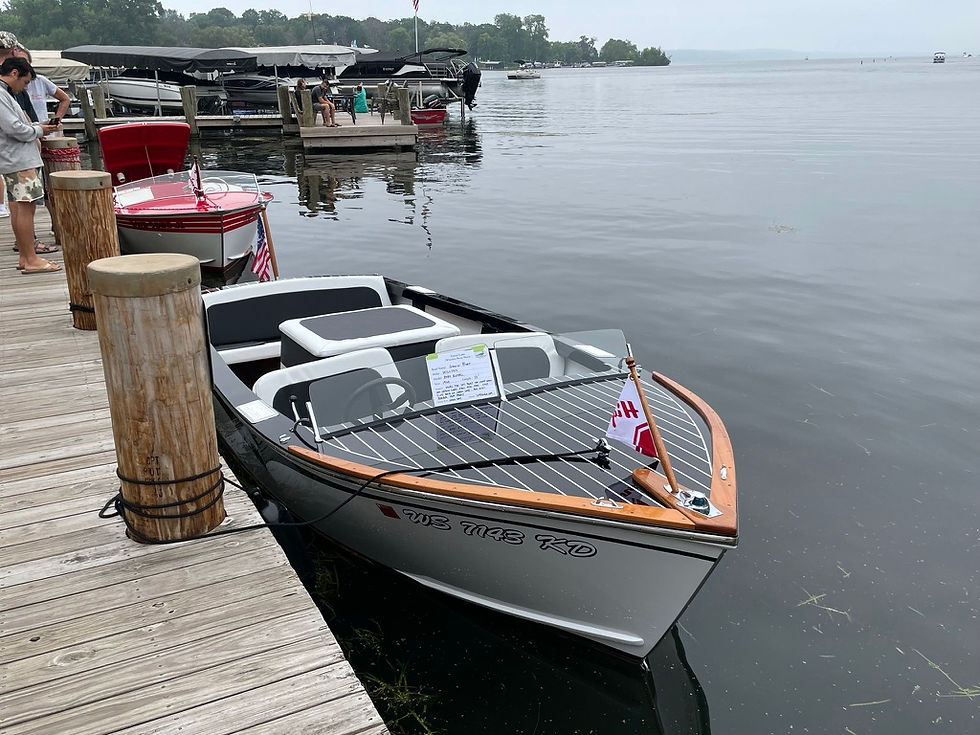




HEALTH OF THE POND
The Mill Pond is of crucial ecological importance to the health of the entire lake and Green Lake Watershed. As the sole outflow, The Mill Pond facilitates essential water circulation which distributes oxygen, prevents stagnation and removes harmful waste. However, the health of the Mill Pond is in jeopardy and restoring it is vital to the long-term viability of Green Lake for generations to come. It is the keystone of our vision.

RECREATION
Since the 1860’s families from all over the country have discovered the beautiful clear waters of Green Lake for its fishing, swimming, sailing and boating. The pond and its adjacent canals were once one of most popular fishing spots year-round for enthusiasts, young and old. A restored Mill Pond will again provide a safe harbor in a beautiful and tranquil setting for canoeing, paddle boarding and fishing.

VIBRANT DOWNTOWN
Green Lake is a tourism and economic engine for central Wisconsin, providing jobs and tax-revenue for the local communities. Inspired by the popular Deacon Mills Park Wharf we envision a vibrant boardwalk along the shores of the Mill Pond. By providing ample boat docking it would allow for increased access to local businesses and the many wonderful events that Green Lake has to offer during the summer.
Central to our vision is the creation of a Veterans’ and First Responders’ Park Facility designed to benefit all, including our nation’s heroes, people with mobility impairment as well as older adults. ADA compliant park facilities with wheelchair accessible kayak and canoe launches would provide a unique recreational and social environment to our larger community.
ENJOYABLE FOR ALL

One of our objectives is to improve the connectivity of the Mill Pond to greater Green Lake. Improved utilization of the Canal Street and Hattie Sherwood Camp Ground Boat ramps would provide relief for the main Dartford Bay ramp and its limited parking. Homeowners who live on the Mill Pond would benefit from more functional access to the main Lake.
LAKE ACCESSIBILITY


RESTORING NATURAL
BEAUTY FOR ALL
Join us in our vision to restore the Mill Pond long term in order to serve as a recreational and economic centerpiece that is accessible for the entire Green Lake community (residents and visitors alike).
MILL POND STORY
The Mill Pond in Green Lake, Wisconsin, originates in the mid-19th century, stemming from early settlers' efforts to harness the area's water power for industrial purposes. The Mill Pond has a long history as part of Green Lake, and over the years has been maintained and repaired through the efforts, vision, and support of local community members, the City of Green Lake, and the DNR. It has been 35 years since the last significant effort to ensure the health and longevity of Mill Pond, and it is now time for the next generation to step up and ensure the health and long-term viability of this critical aspect of Green Lake.
In 1845, Anson Dart constructed the first dam and sawmill on this site, effectively raising the level of Green Lake and forming Mill Pond and Dartford Bay. This strategic move facilitated the development of various mills, including the John S. Sherwood Grist Mill, built in 1850. The four-story wooden grist mill utilized water power derived from a manually dug channel connecting the Mill Pond. By 1870, the sawmill ceased operations, and in 1873, the Grist Mill was destroyed by fire.
In 1905, Victor Lawson of Lone Tree Point bought the “mill square” from Sherwood and, wishing to raise the lake level at the West end, added large boulders to the existing dam structure. Crumbling ruins of the old Mill Race were filled in.
In the early 20th century, local women's organizations initiated efforts to transform the area into a public park, which Lawson later deeded to the Village. With financial support from Victor and Jessie Lawson, the site was beautified with grass, trees, shrubs, and playground equipment, evolving into the inviting space known today as Playground Park.
During the 1940s, the State of Wisconsin built a carp pond close to the dam, fencing an area to raise the carp. Fish were harvested for food and use as fertilizer. During the ’60s, to facilitate the development of the back side of town, canals were dug to support development on West Bay Ct and East Bay Ct.
In the 1980s, the dam fell into disrepair. There was a significant fundraising campaign program, and construction was finished in 1988, dedicating the dam in use today. In 1989, the DNR engineers determined that the spillwater capacity into the waters of the Puchyan River was too small. With financial aid from the state and support from the local residents, the required repairs were made, and waterways were “shored” with necessary but decorative rock. A wooden bridge across the old Mill Race stream completed the picture and is a centerpiece of Green Lake today, used by many for pictures and fishing.
The Mill Pond's creation and subsequent development reflect the community's adaptability and commitment to
preserving its historical and natural resources for future generations.
Credit: Thank you to the Green Lake Historical Society for their help in compiling an overview of Mill Pond. We also appreciate utilizing content and pictures from several historical perspectives on Green Lake, including
Green Lake Memories by Thomas Gnewuch, Dartford Days by Diane Egbert, and A Heritage History of Beautiful Green Lake Wisconsin by Robert and Emma Heiple.
